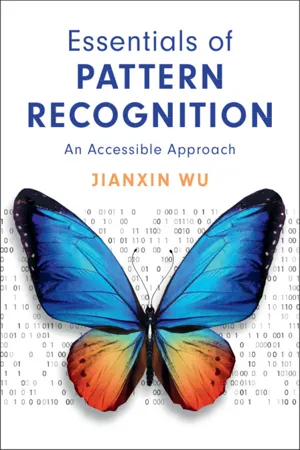
- English
- PDF
- Available on iOS & Android
About this book
This textbook introduces fundamental concepts, major models, and popular applications of pattern recognition for a one-semester undergraduate course. To ensure student understanding, the text focuses on a relatively small number of core concepts with an abundance of illustrations and examples. Concepts are reinforced with hands-on exercises to nurture the student's skill in problem solving. New concepts and algorithms are framed by real-world context and established as part of the big picture introduced in an early chapter. A problem-solving strategy is employed in several chapters to equip students with an approach for new problems in pattern recognition. This text also points out common errors that a new player in pattern recognition may encounter, and fosters the ability for readers to find useful resources and independently solve a new pattern recognition task through various working examples. Students with an undergraduate understanding of mathematical analysis, linear algebra, and probability will be well prepared to master the concepts and mathematical analysis presented here.
Frequently asked questions
- Essential is ideal for learners and professionals who enjoy exploring a wide range of subjects. Access the Essential Library with 800,000+ trusted titles and best-sellers across business, personal growth, and the humanities. Includes unlimited reading time and Standard Read Aloud voice.
- Complete: Perfect for advanced learners and researchers needing full, unrestricted access. Unlock 1.4M+ books across hundreds of subjects, including academic and specialized titles. The Complete Plan also includes advanced features like Premium Read Aloud and Research Assistant.
Please note we cannot support devices running on iOS 13 and Android 7 or earlier. Learn more about using the app.
Information
Table of contents
- Cover
- Half-title
- Title page
- Copyright information
- Contents
- List of Figures
- List of Tables
- Preface
- Notation
- Part I Introduction and Overview
- Part II Domain-Independent Feature Extraction
- Part III Classifiers and Tools
- Part IV Handling Diverse Data Formats
- Part V Advanced Topics
- Bibliography
- Index